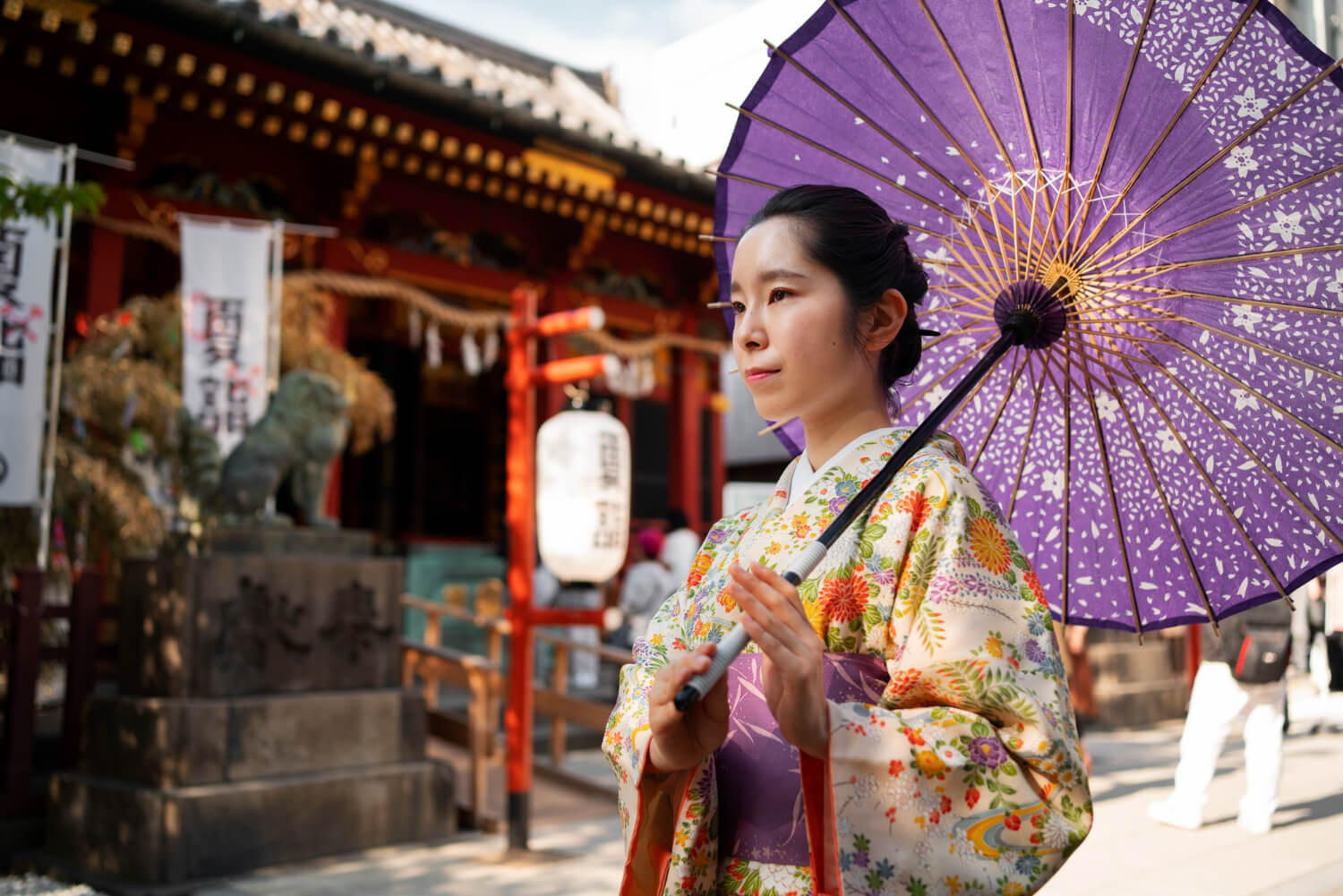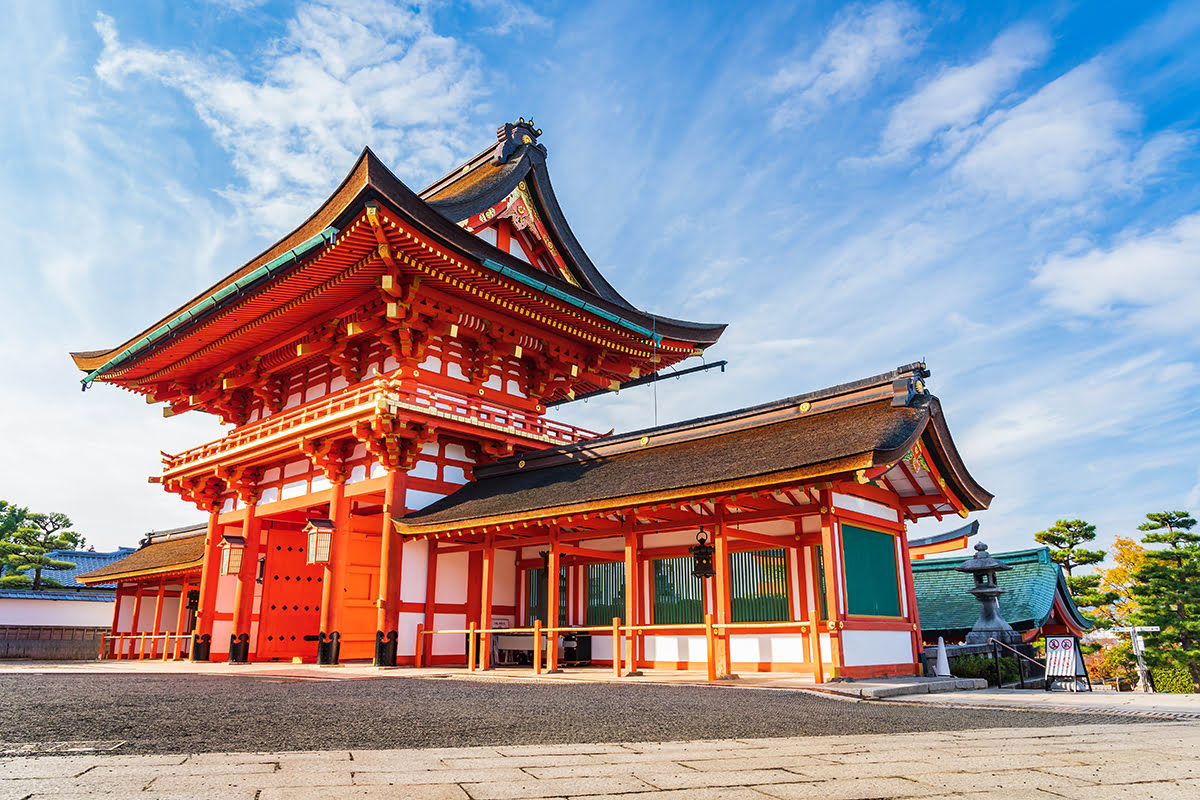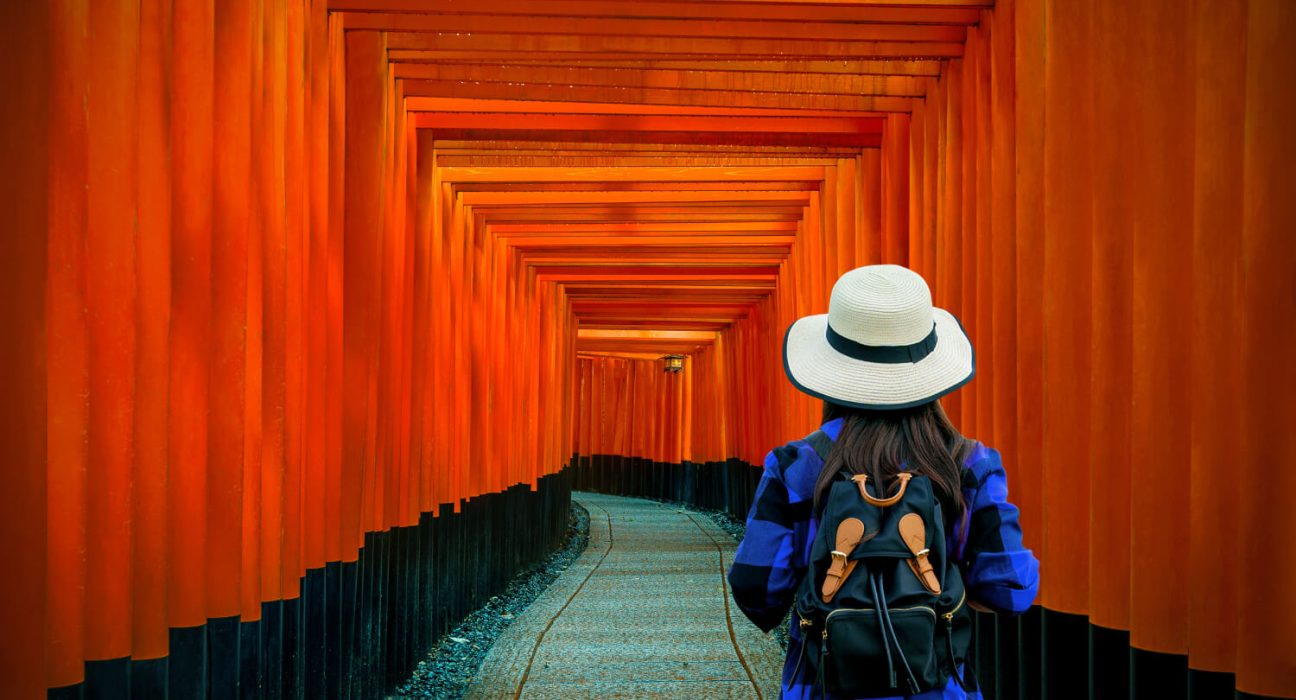Japan is famous for its rich history, breathtaking architecture, and deep-rooted spiritual traditions. Its many shrines and temples are testaments to a culture that harmonizes Shinto and Buddhist beliefs. These sacred sites are places of worship and reflections of Japan’s art, history, and natural beauty. Here are ten of the best traditional shrines and temples in Japan.
1. Fushimi Inari Taisha (Kyoto)
Easily one of the most iconic shrines in Japan, Fushimi Inari Taisha is renowned for its thousands of bright vermilion torii gates. Dedicated to the Shinto deity of rice and agriculture, Inari, this shrine has a history of over 1,300 years. Visitors can explore the winding trails up Mount Inari, where the gates create an almost mystical pathway. Along the way, you’ll find smaller shrines, statues of foxes (messengers of the deity), and stunning views of Kyoto.
2. Kinkaku-ji (Kyoto)
Also known as the Golden Pavilion, Kinkaku-ji is a Zen Buddhist temple famous for its visually striking exterior covered in gold leaf. Originally built in 1397 as a retirement villa for a shogun, it later became a Buddhist temple. Set amidst a serene pond and landscaped gardens, the reflection of the gilded structure in the water is mesmerizing. Visiting this temple feels like stepping into a living painting, making it one of Japan’s most photographed landmarks.
3. Meiji Jingu (Tokyo)
In a peaceful forest in the heart of bustling Tokyo, Meiji Jingu is a Shinto shrine dedicated to Emperor Meiji and Empress Shoken. Completed in 1920, the shrine honors their efforts in modernizing Japan while preserving its traditional values. The approach to the shrine through lush, wide paths is calming, and visitors often write wishes on ema (wooden prayer plaques). Its proximity to the trendy Harajuku district makes it a perfect blend of the past and present.
4. Itsukushima Shrine (Miyajima)
Situated on Miyajima Island near Hiroshima, Itsukushima Shrine is best known for its iconic “floating” torii gate. The gate hovers on the sparkling water at high tide, creating a magical sight. Dating back to the 6th century, the shrine’s buildings are built on stilts over the sea, a unique architectural feature that complements its spiritual energy. The island is a wildlife haven, with friendly deer roaming freely.
5. Todai-ji (Nara)
Todai-ji is home to the world’s largest wooden structure and houses an immense bronze statue of the Great Buddha (Daibutsu). Built in the 8th century, Todai-ji was once the center of Buddhist authority in Japan. The impressive main hall, Daibutsuden, is both a spiritual and architectural wonder. Nara Park, which surrounds the temple, adds to the experience with its friendly deer, considered sacred messengers in Japanese mythology.
6. Ryoan-ji (Kyoto)
Ryoan-ji is a Zen temple celebrated for its contemplative rock garden, a masterpiece of simplicity and mystery. The garden consists of 15 carefully placed rocks, but only 14 can be seen at once from any vantage point. Founded in 1450, Ryoan-ji exemplifies the wabi-sabi aesthetic, valuing imperfection and transience. Meditating here or simply taking in the design offers visitors a deeply reflective experience.
7. Ise Grand Shrine (Mie Prefecture)

Known as the most sacred Shinto shrine in Japan, Ise Jingu is dedicated to Amaterasu, the sun goddess and the ancestor of the Imperial family. Consisting of two main shrines, the Inner Shrine (Naiku) and Outer Shrine (Geku), the structures are rebuilt every 20 years to symbolize renewal, a tradition practiced for over 1,300 years. Surrounded by serene forests and rivers, its timeless atmosphere is deeply moving.
8. Senso-ji (Tokyo)
Located in the heart of Tokyo’s historic Asakusa district, Senso-ji is the city’s oldest temple, dating back to 645 AD. Dedicated to Kannon, the goddess of mercy, the temple is a vibrant blend of sacred and lively. Visitors enter through the iconic Kaminarimon Gate, flanked by giant statues of deities, before walking through Nakamise Street, where you can enjoy traditional snacks and shop for souvenirs. The stunning five-story pagoda and main hall make the visit unforgettable.
9. Kiyomizu-dera (Kyoto)
Perched on the hillside of Mt. Otowa, Kiyomizu-dera offers awe-inspiring views of Kyoto. “Kiyomizu” means pure water, reflecting the sacred Otowa Waterfall nearby. Built in 778 without nails, this Buddhist temple is an architectural marvel. The spacious wooden terrace, supported by towering pillars, is perfect for soaking in the beauty of cherry blossoms in spring or fiery red maple leaves in autumn.

10. Nikko Toshogu (Nikko)
A UNESCO World Heritage Site, Nikko Toshogu is a Shinto shrine dedicated to Tokugawa Ieyasu, the founder of the Tokugawa shogunate. The shrine’s elaborate carvings, gold leaf details, and vividly painted structures make it stand apart from other traditional shrines. Highlights include the famous “Three Wise Monkeys” carving and the Yomeimon Gate, intricately adorned with over 500 sculptures. Surrounded by dense cedar forests, it exudes a timeless majesty.

